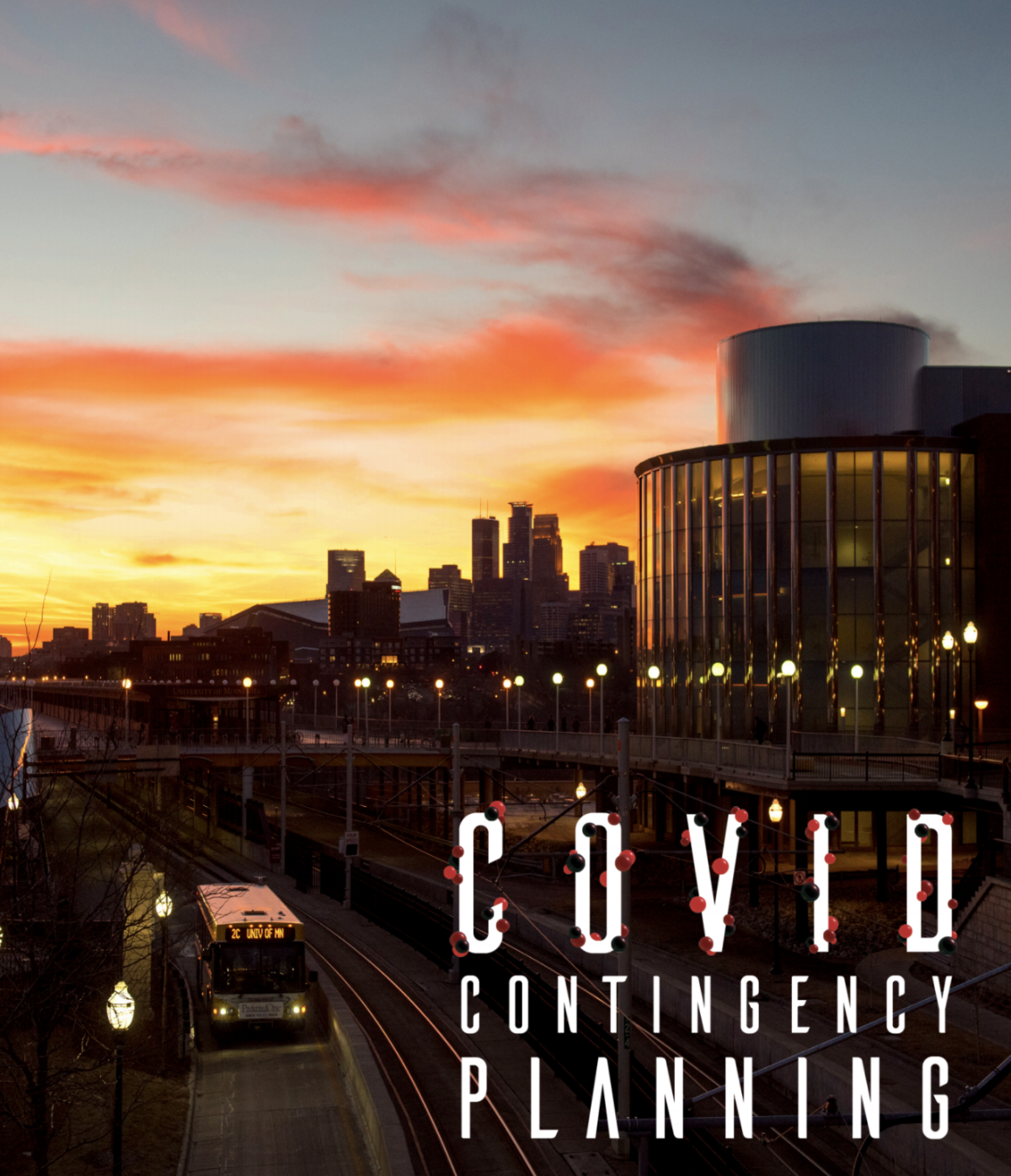COVID Contingency Planning

How ISyE faculty are helping universities reopen safely.
Amidst a pandemic, how do you safely operate a campus? If you ask ISyE Assistant Professor Ankur Mani, he will tell you: “That’s a systems and operations question.”
COVID-19 simulations across the globe have been lacking an industrial engineering perspective, according to Mani. “None of them have taken a network-based approach to the problem,” he says. “They take a homogeneous population-based approach that ignores the structured nature of human interactions in the built environments. You need to take a two-sided network approach of people and places.”
Industrial and systems engineers are uniquely equipped to dissect large-scale problems—such as a public health emergency—and design new, more efficient operations. That’s why as higher education institutions sent everyone home or locked down in the spring, Mani started to wonder if there was another way to protect a campus community from COVID-19. He started by partnering with ISyE Associate Professor Krishnamurthy Iyer and Computer Science Professor Jaideep Srivastava. Together, they discovered how to keep a university running and relatively safe. Their solution: Close the busiest locations while monitoring sparsely visited ones.
“If we shut down only the top 10 percent of the places—high traffic areas—we would have a similar impact to what happened in a city, like New York City, where everything shut down,” says Mani.
This structural approach is even more important for smaller environments such as university campuses. Along with his colleagues, Mani determined a way to measure all types of campus interactions. “We can classify all interaction structures on campus as rivers, groups, and queues,” says Mani. In his example, rivers are the campus pathways and walkways; groups are formed within classrooms and university activities; and queues are the service lines at places like banks and cafes.
“Rivers and queues admit easy solutions. All rivers could be made one-way while maintaining sufficient distance. All queues could be created online with designated arrival and service times, thus avoiding physical waiting and reducing interactions,” says Mani. However, groups are the most difficult to control. “Part of the reason why,” says Mani, “is because it constrains the freedom you have on campus within classes or groups. The big risk in the system today is not because of community transmission inside the system, but transmission from outside.”
Approximately 80 percent of University of Minnesota students live off campus, and most faculty, staff, and visitors come from surrounding areas as well.
So Mani assembled a multidisciplinary team to evaluate operational policies under a pandemic. Together with ISyE PhD student Jiali Huang, computer science graduate students Himanshu Kharkwal, Dakota Olson, and Abhiraj Mohan, and in consul- tation with ISyE Associate Professor Krishnamurthy Iyer and public health experts, Mani and Srivastava created a stochastic network simulation framework to evaluate campus operations. Their efforts culminated into a series of back-to-school protocols that would guide students, faculty, staff, and visitors back into campus. The team tested various aspects of the plan, including a face covering requirement.
“One thing universities should look for are low-cost, high-impact actions they can take,” says Mani. “We demonstrated that without masks there would be no classes. The marginal cost of putting on a mask is minimal—a big bang for the buck.”
“The marginal cost of putting on a mask is minimal—a big bang for the buck.” —Ankur Mani, ISyE Assistant Professor
The researchers went on to review university plans for enhanced cleaning practices, its testing capacity, ventilation rates in buildings, maximum class sizes for in-person learning, and a system for maintaining physical distance around campus and in classrooms.
The team also modeled solutions for the risk of infection. Their findings suggested that protocols such as the University of Minnesota Mtest—a plan of action for testing, isolating, contact tracing, and quarantining in the event of an outbreak or individual testing positive for COVID-19—would allow for safe operations on campus. This was a surprising and valuable finding because it provided a safe way of operating the University campus without the massive cost of testing being implemented in other schools. Their predictions about the number of community infections remain accurate more than halfway through the fall 2020 semester when this article was published.
“The number of new infections coming from the outside will hopefully be very small—two or three on average [per day]—but what we want to do is mitigate the community transmission,” says Mani. “This is what we are focusing on.”
In the end, the extensive testing and modeling done by Mani and his colleagues provide universities with concrete guidance on how to reopen safely. A paper based on this research was recently submitted for publication. A preprint can be downloaded here.